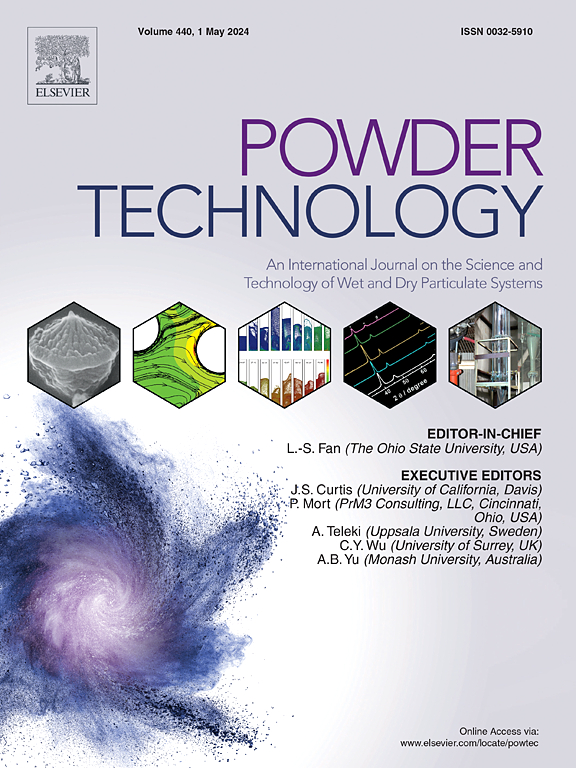细粒油页岩与褐煤在75t /h循环流化床锅炉内共燃及污染物形成特性
IF 4.5
2区 工程技术
Q2 ENGINEERING, CHEMICAL
引用次数: 0
摘要
油页岩气热载体重整是一种有效的油页岩资源化利用方法,在此过程中产生的油页岩颗粒具有显著的热值。因此,循环流化床燃烧是利用这些油页岩细颗粒的有效方法。本研究在75t /h褐煤循环流化床锅炉上进行了北漂低热值油页岩掺合试验。采用CPFD方法,对油页岩颗粒的燃烧特性进行了数值模拟研究。本研究探索了7种不同的油页岩掺合比例,并分析了其对循环流化床锅炉燃烧和污染物排放特性的影响,以及不同的进料方式。结果表明,将混合比从0%增加到35%,平均每小时炉温从1145 K降低到1080 K以下。NO浓度从188 mg/Nm3上升到289 mg/Nm3, SO2浓度从2335 mg/Nm3上升到6765 mg/Nm3。研究表明,在不对锅炉本体进行改造的情况下,混合比不应超过35%。最优的供油方式是两面供油。这些结果为CFB燃烧中低热值和高灰分燃料的利用提供了有价值的见解。本文章由计算机程序翻译,如有差异,请以英文原文为准。

Co-combustion and pollutant formation characteristics of fine oil shale and lignite in a 75 t/h CFB boiler
Oil shale gas heat carrier retorting is an effective utilization method of oil shale, oil shale fines are generated in this process which have a significant calorific value. Consequently, CFB combustion stands out as an effective methods to utilize these fine oil shale particles. This study conducted experiments blending low-calorific-value oil shale from Beipiao in a 75 t/h lignite CFB boiler. Using the CPFD method, numerical simulations were performed to investigate the combustion characteristics of these fine oil shale particles. The study explored seven different oil shale blending ratios and analyzed their impact, along with various feeding methods, on the combustion and pollutant emission characteristics of the CFB boiler. The findings revealed that increasing the blending ratio from 0 % to 35 % resulted in a decrease in the average hourly furnace temperature from 1145 K to below 1080 K. Additionally, the NO concentration rose from 188 mg/Nm3 to 289 mg/Nm3, the SO2 concentration escalated from 2335 mg/Nm3 to 6765 mg/Nm3. The study suggests that without modifications to the boiler body, the blending ratio should not exceed 35 %. The optimal feeding method involves supplying oil shale from both sides. These results provide valuable insights into the utilization of low-calorific-value and high-ash fuels for CFB combustion.
求助全文
通过发布文献求助,成功后即可免费获取论文全文。
去求助
来源期刊

Powder Technology
工程技术-工程:化工
CiteScore
9.90
自引率
15.40%
发文量
1047
审稿时长
46 days
期刊介绍:
Powder Technology is an International Journal on the Science and Technology of Wet and Dry Particulate Systems. Powder Technology publishes papers on all aspects of the formation of particles and their characterisation and on the study of systems containing particulate solids. No limitation is imposed on the size of the particles, which may range from nanometre scale, as in pigments or aerosols, to that of mined or quarried materials. The following list of topics is not intended to be comprehensive, but rather to indicate typical subjects which fall within the scope of the journal's interests:
Formation and synthesis of particles by precipitation and other methods.
Modification of particles by agglomeration, coating, comminution and attrition.
Characterisation of the size, shape, surface area, pore structure and strength of particles and agglomerates (including the origins and effects of inter particle forces).
Packing, failure, flow and permeability of assemblies of particles.
Particle-particle interactions and suspension rheology.
Handling and processing operations such as slurry flow, fluidization, pneumatic conveying.
Interactions between particles and their environment, including delivery of particulate products to the body.
Applications of particle technology in production of pharmaceuticals, chemicals, foods, pigments, structural, and functional materials and in environmental and energy related matters.
For materials-oriented contributions we are looking for articles revealing the effect of particle/powder characteristics (size, morphology and composition, in that order) on material performance or functionality and, ideally, comparison to any industrial standard.
 求助内容:
求助内容: 应助结果提醒方式:
应助结果提醒方式:


